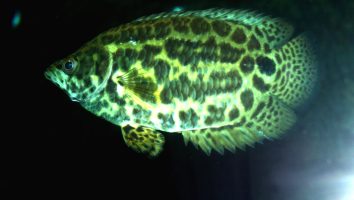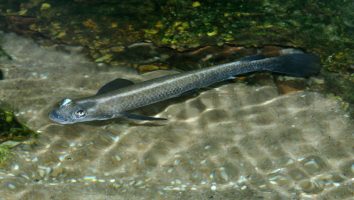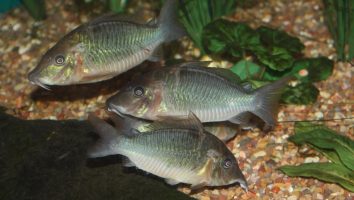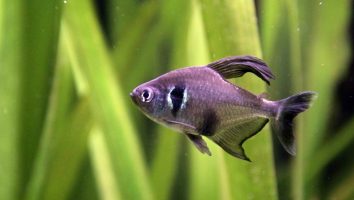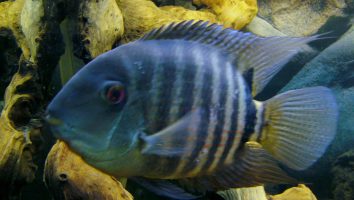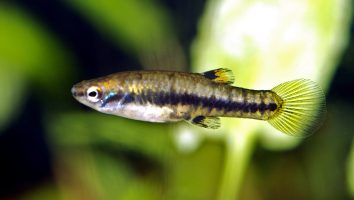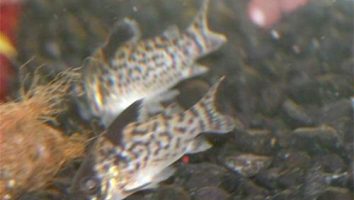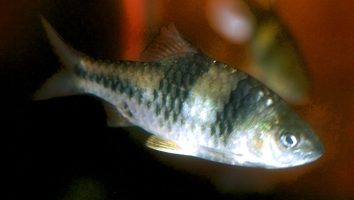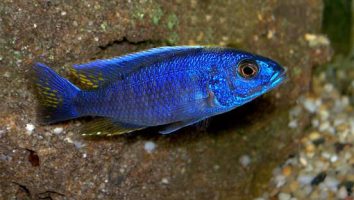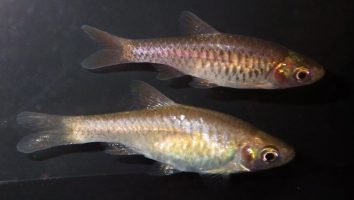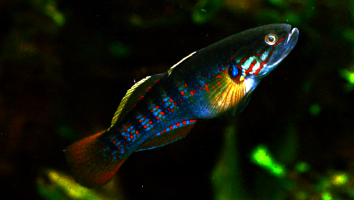The masked corydoras is a beautiful and popular freshwater fish that is easy to care for.
This species is a great addition to any aquarium, and will quickly become one of your favorites.
But there’s a lot of misinformation out there when it comes to this fish. We’ve read so many conflicting suggestions on care and tank mates over the years!
So we made this guide to set the record straight. In it, you’ll learn the correct masked corydoras care guidelines (and tips on how to breed them).
Table of contents
Species overview
The masked corydoras (Corydoras amazonicus) is a species of freshwater fish that is native to the Amazon River basin in South America.
They are a bottom-dwelling fish that prefers slow-moving waters with a lot of vegetation. This is something to keep in mind if you’re setting up their tank because you’ll want to replicate this environment as much as possible.
The masked corydoras is a peaceful fish that is compatible with a wide variety of tank mates. They are a very popular choice for community tanks because of this.
One of the most distinctive features of the masked corydoras is the black stripe that runs through its eye. This is how it got its name!
Appearance
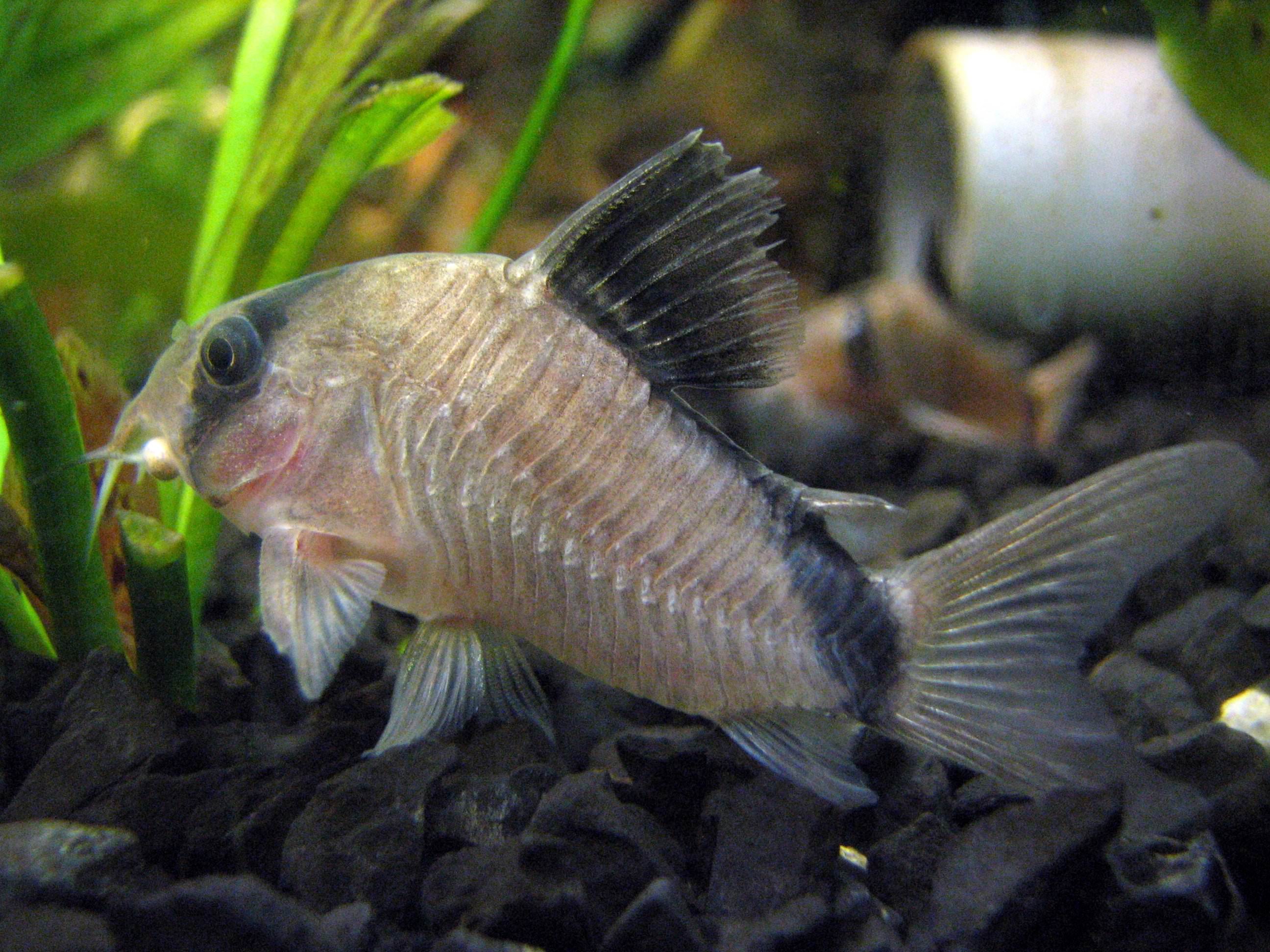
The first thing you’ll notice about this fish is the black “mask” that covers the majority of their face. This mask is actually a black band that runs from their snout all the way back to the base of their tail.
The body of the Masked Corydoras is a light brownish color. This can sometimes look a bit yellowish as well. The brown coloration is solid all over their body with a few black spots. These black spots are usually along their dorsal line and get larger as they get closer to the tail.
The fins on this fish are all a translucent white color. The dorsal fin is short and starts about two-thirds of the way back on their body.
The caudal and anal fins are both forked and symmetrical. The pectoral fins are a bit longer than the dorsal and anal fins.
The Masked Corydoras has a very long and thin body shape. This gives them a lot of speed and agility in the water.
Lifespan
The average lifespan for a Masked Corydoras is about 5 to 7 years. However, there have been reports of these fish living up to 10 years in captivity.
As with all fish, the lifespan of a Masked Corydoras can be impacted by a number of different factors. Poor water quality, for instance, can shorten their lifespan significantly.
Stress is also a big factor. If these fish are constantly being harassed by tank mates or if they’re not getting enough to eat, their lifespan will be reduced.
Size
Masked corydoras grow to be about 2.5 inches in length.
Tank
Tank Size
The minimum tank size for a single Masked Corydoras is 10 gallons, but as with most fish it’s best to keep them in a group. A group of 5-6 fish would do well in a 20 gallon tank.
These fish are relatively small so they don’t require a lot of space, but they do best in groups so you need to make sure you have enough room for them to school.
Water Parameters
The best course of action is to provide an environment that replicates their natural habitat as closely as possible. That includes water conditions.
The masked corydoras is a tropical freshwater fish. That means you need to provide warm water with a little bit of acidity. They come from fast-moving streams, so plenty of oxygenation is also a must.
Here are a few basic parameters to help create a healthy corydoras environment.
- Water temperature: 70 to 80 degrees Fahrenheit
- pH levels: 6.5 to 7.5
- Water hardness: 2 to 12 dGH
- Alkalinity Levels: 4-8 dKH
What To Put In Their Tank
When it comes to setting up the inside of an aquarium for Masked Corydoras, there are a few key things to keep in mind.
First and foremost, these fish need a lot of hiding places. We recommend using a lot of plants (real or fake), caves, and rocks to create a labyrinth of sorts. This will help reduce stress levels and make them feel more comfortable in their environment.
The substrate you use is also important. Corydoras are bottom-dwellers and will spend a lot of time rooting around in it. A soft, sandy substrate is ideal since it’s easy on their barbels (and easier to clean).
You should also include some driftwood in their tank. Corydoras love to hide underneath logs and wood, and it also provides a surface for algae to grow on (which they love to eat).
Aquarium plants are a great way to help oxygenate the water and provide hiding places for these fish. We recommend using a mix of live and fake plants to get the best of both worlds (live plants for oxygenation and fake plants for durability).
Some great plants to use include Hornwort, Water Wisteria, and Java Moss.
Common Diseases
Corydoras are a pretty hearty bunch, and they don’t tend to get sick very often. However, there are a few things you should watch out for.
The most common disease you’ll see in these fish is ich. This is a parasites that will attach itself to your fish and cause white spots to appear on their body.
If left untreated, ich can be fatal. However, it’s relatively easy to treat if you catch it early enough.
The other thing you need to be on the lookout for is any sort of injury. These fish are pretty small, so they can easily be injured by other fish or by the substrate in their tank.
If you see any cuts or scrapes on your corydoras, make sure to treat them immediately. Infections can spread quickly in these fish and can be very difficult to treat.
Overall, corydoras are pretty low-maintenance fish. As long as you keep an eye out for the things we mentioned above, you shouldn’t have any problems.
Behavior & Temperament
The masked corydoras is a shy but social fish that prefers to live in groups. In the wild, they can be found in schools of up to 20 fish. When they’re not in a school, they tend to be reclusive and hide a lot.
In the aquarium, these fish are best kept in groups of 5 or more. If you have fewer than 5, they may become skittish and hide a lot. They’re also more likely to be bullied by other fish.
When they’re in a group, they’re much more active and tend to swim around a lot more. They’re also more likely to interact with other fish in the tank.
Masked corydoras are peaceful fish that get along with other fish. They’re not aggressive and usually leave other fish alone. The only time they may become aggressive is if they feel threatened.
Tank Mates
The masked corydoras is a small, peaceful fish that does well in a community tank. These bottom-dwellers are native to South America and prefer to live in groups. As a result, they do best when kept with other fish.
In the wild, masked corydoras live in slow-moving rivers and streams. They’re used to living in close quarters with other fish and don’t have any problem sharing a tank.
When choosing tank mates, look for other small, peaceful fish. These fish should also prefer to stay near the bottom of the tank. Some good options include:
- Tetras
- Guppies
- Platies
- Mollies
- Swordtails
- Danios
- Corydoras Catfish
- loaches
Breeding
It can be difficult to breed this species in captivity, but it is possible with a little bit of patience and the right setup.
As with all Corydoras, the first thing you need to do is set up a breeding tank. This should be a small tank, around 5 gallons, with soft water. The temperature should be between 72 and 79 degrees Fahrenheit.
You will also need to add a lot of plants to the tank. Corydoras prefer to lay their eggs on plants. Java moss is a good option.
You don’t need to add a lot of fish to the breeding tank. In fact, it’s better to start with just a few. Three to five fish is usually enough. Just make sure that you have at least one male and one female.
When the fish are ready to spawn, the female will lay her eggs on the plants. The male will then fertilize them.
Once the eggs are laid, you must remove the adults from the tank. They will eat the eggs if given the chance.
The eggs will hatch in five to seven days. When they hatch, you can feed the fry baby brine shrimp or crushed-up flake food.
Conclusion
The Masked Corydoras is an awesome fish that is perfect for beginner aquarists. They’re easy to care for, don’t require a lot of space, and are very peaceful.
We think they’re a great addition to any community tank and they’re sure to bring a smile to your face.
If you’re looking for a low-maintenance fish that is still a lot of fun, the Masked Corydoras is a great choice!

